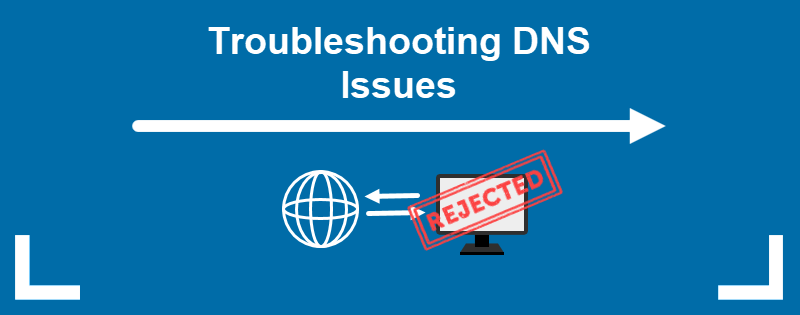Nameserver errors can disrupt the accessibility of websites and are often a common issue in web hosting.
Nameserver errors can cause issues with accessing websites, email, and other internet services. Here are some common nameserver errors and how to fix them:
Common Nameserver Errors
Table of Contents
1. Nameserver Not Responding
- Error: DNS query fails because the nameserver doesn’t respond.
- Causes:
- Incorrect DNS settings
- Firewall or network issues
- Outdated cache
- Fix:
- Check DNS Settings: Ensure that the correct nameserver addresses are configured on the client or server.
- Flush DNS Cache: Clear the DNS cache to remove outdated information.
- Windows:
ipconfig /flushdns - macOS/Linux:
sudo dscacheutil -flushcacheorsudo systemd-resolve --flush-caches
- Windows:
- Test Nameserver Connectivity: Use tools like
nslookup,dig, orpingto verify if the nameserver can be reached. - Disable Firewall: Temporarily disable any firewalls or security software to check if they are blocking DNS traffic.
2. DNS Server Not Found
- Error: Browser cannot resolve the domain name because it can’t find the DNS server.
- Causes:
- Incorrect or missing DNS records
- Issues with the nameserver configuration
- Fix:
- Verify DNS Records: Check if the DNS records (A, MX, CNAME, etc.) are correctly set up in the DNS zone file.
- Check Nameserver Configuration: Ensure that the nameservers listed for the domain in the registrar’s settings match the ones configured on the DNS hosting platform.
- DNS Propagation: If you recently updated DNS settings, it may take time (up to 48 hours) to propagate.
3. SERVFAIL Error
- Error: The DNS query fails due to an internal nameserver problem.
- Causes:
- Misconfigured DNSSEC
- Recursive query failure
- Timeout issues
- Fix:
- Disable or Fix DNSSEC: If DNSSEC is enabled but improperly configured, you may get SERVFAIL. Check the DNSSEC setup in your domain settings or disable it if it’s not needed.
- Increase Query Timeout: Modify the DNS resolver’s timeout settings to allow more time for responses.
- Recursive DNS Check: Ensure that recursive queries are allowed if necessary, and your server can communicate with upstream DNS servers.
4. REFUSED Error
- Error: The DNS server refuses to answer the query.
- Causes:
- Misconfigured permissions on the DNS server
- Access restrictions or IP filtering
- Fix:
- Allow Queries: Check the DNS server configuration (e.g.,
named.conffor BIND) to ensure that it allows queries from the correct IP addresses or networks. - Check ACLs: Ensure that there are no access control lists (ACLs) preventing queries from being accepted.
- Restart DNS Server: Sometimes, restarting the DNS service (BIND, Unbound, etc.) can resolve temporary issues.
- Allow Queries: Check the DNS server configuration (e.g.,
5. NXDOMAIN Error (Non-Existent Domain)
- Error: DNS lookup fails because the domain doesn’t exist.
- Causes:
- Domain has expired or was never registered
- DNS record is missing or misconfigured
- Fix:
- Check Domain Registration: Ensure the domain is properly registered and hasn’t expired.
- Verify DNS Records: Use a DNS lookup tool to see if the correct DNS records are present. If not, add or correct the DNS records in the DNS zone file.
6. Timeout Error
- Error: DNS queries take too long to resolve, resulting in a timeout.
- Causes:
- Network congestion or high latency
- DNS server is overloaded or down
- Fix:
- Change DNS Server: Switch to a more reliable DNS provider like Google Public DNS (
8.8.8.8,8.8.4.4) or Cloudflare DNS (1.1.1.1). - Check DNS Server Load: Ensure that the DNS server isn’t overwhelmed by too many requests. Consider load balancing or reducing the TTL (Time to Live) for certain records.
- Optimize Network Connection: Check for network issues, such as packet loss or latency, that may be causing the timeouts.
- Change DNS Server: Switch to a more reliable DNS provider like Google Public DNS (
7. Misconfigured PTR Record (Reverse DNS)
- Error: Reverse DNS lookups fail, often affecting services like email.
- Causes:
- Incorrect or missing PTR record for the server’s IP address
- Fix:
- Configure PTR Record: Contact your hosting provider or IP block owner to set up the correct PTR record that matches your server’s hostname.
- Verify PTR Record: Use tools like
digornslookupto check if the reverse DNS record is correctly configured.
8. SOA Record Issues
- Error: Issues with the Start of Authority (SOA) record, often related to DNS zone transfers.
- Causes:
- Misconfigured SOA record in the zone file
- Mismatched serial numbers between primary and secondary DNS servers
- Fix:
- Check SOA Configuration: Ensure the SOA record is correctly formatted with the proper serial number, refresh interval, retry time, and expiration time.
- Update Serial Number: If you have multiple nameservers, ensure the serial number is updated whenever changes are made, so secondary nameservers can sync properly.
9. Excessive TTL (Time to Live)
- Error: Cached DNS records stay around too long, causing stale data.
- Causes:
- TTL set too high, leading to slow propagation of updates.
- Fix:
- Lower TTL Values: Temporarily reduce the TTL in your DNS records (e.g., from 24 hours to 5 minutes) before making critical updates to ensure quicker propagation. Raise it back up afterward.
10. Looping or Cyclic CNAME Records
- Error: CNAME record points to itself or results in a loop.
- Causes:
- Incorrect CNAME setup where a record points back to itself.
- Fix:
- Check CNAME Records: Ensure that no CNAME record points to another CNAME in a loop. Each CNAME should resolve to an A or AAAA record (an IP address) eventually.
Tools for Troubleshooting DNS Issues:
nslookup: Simple DNS query tool available on most platforms.dig: Advanced DNS lookup tool for detailed queries and testing DNS propagation.ping: To test the connectivity to a server.- Online Tools: DNS propagation tools (e.g., WhatsMyDNS) help track global DNS resolution and verify configuration.
By following these steps and troubleshooting the common nameserver errors, you can resolve DNS-related issues effectively.
4o



